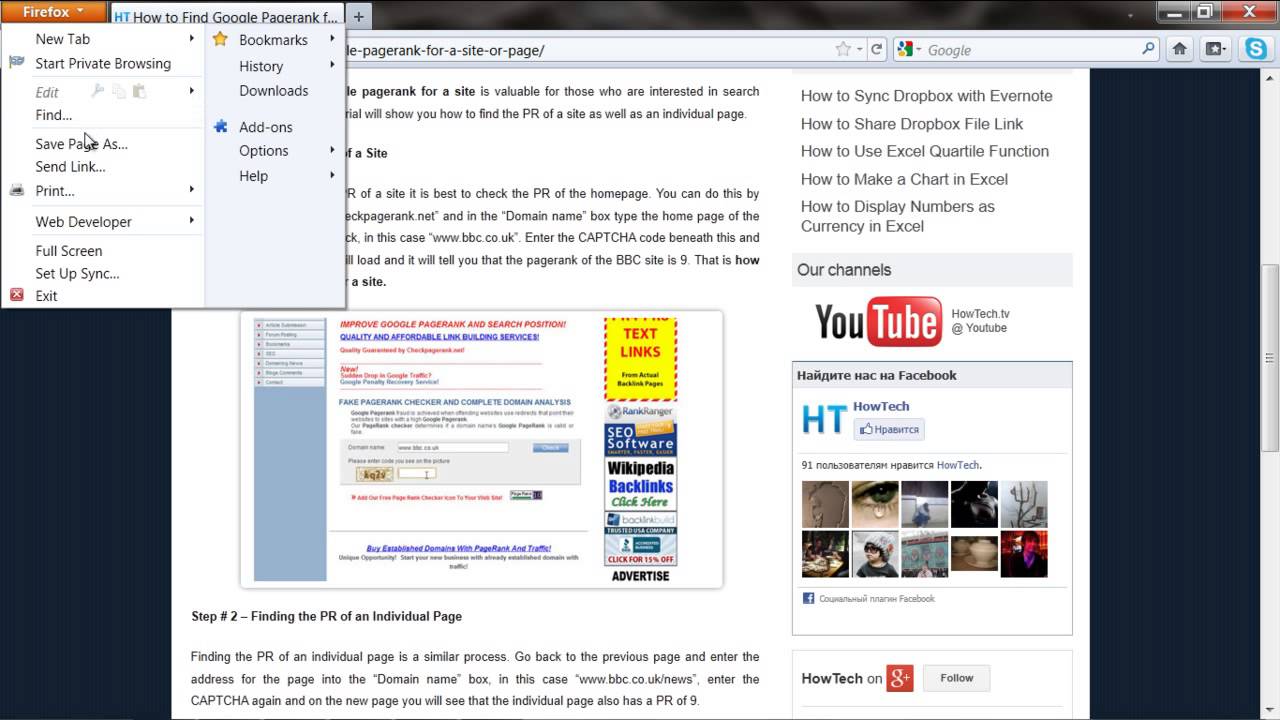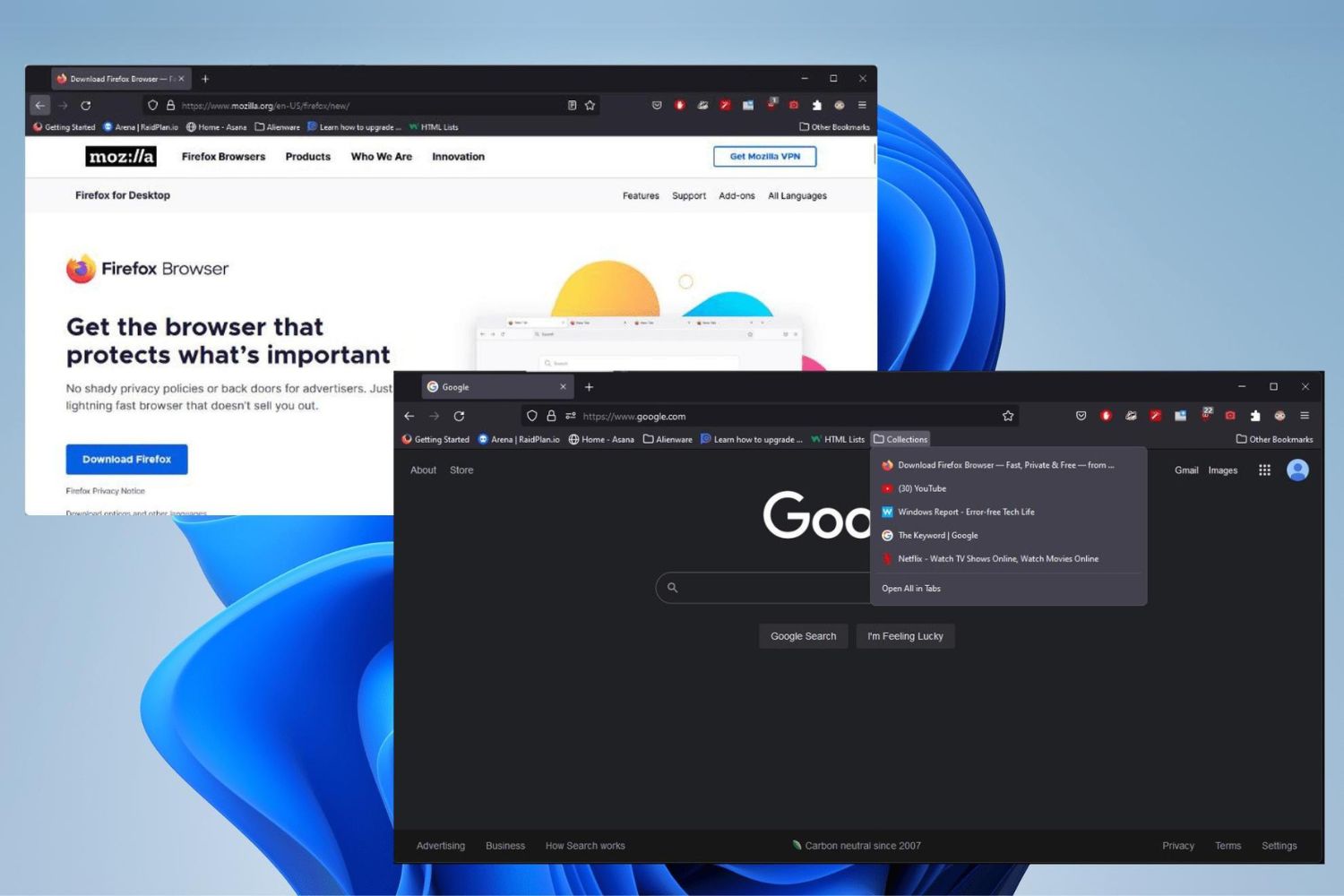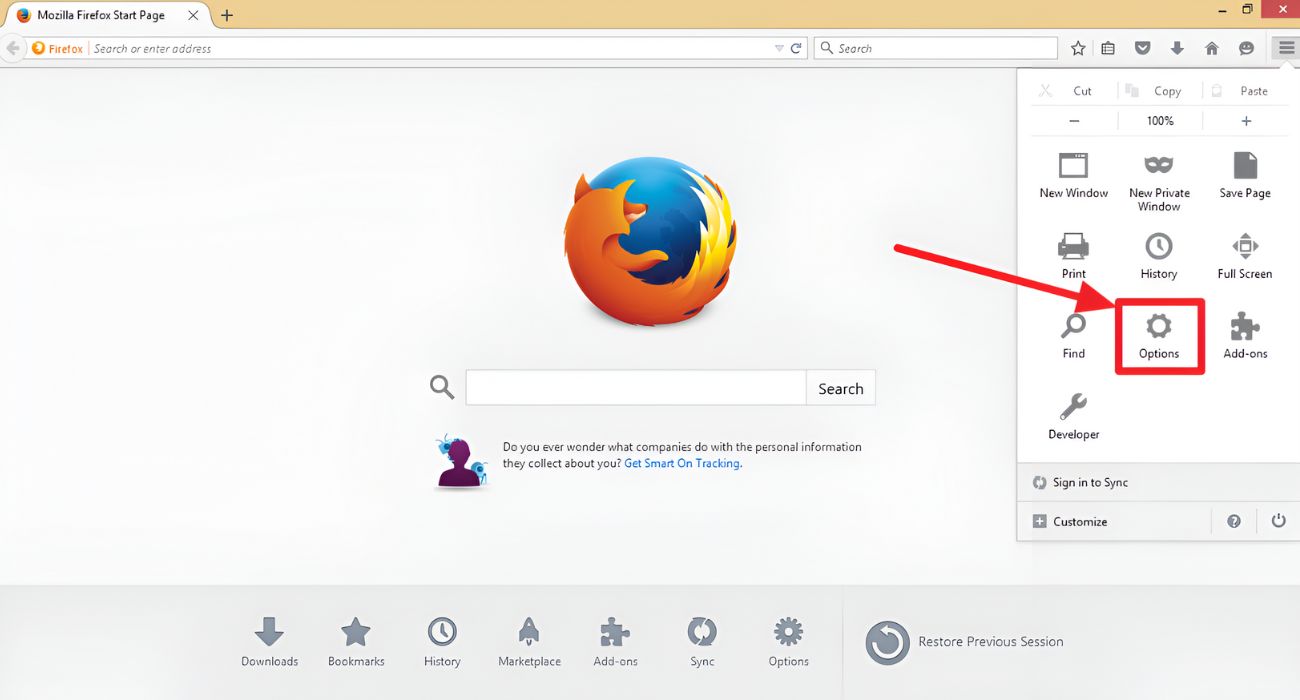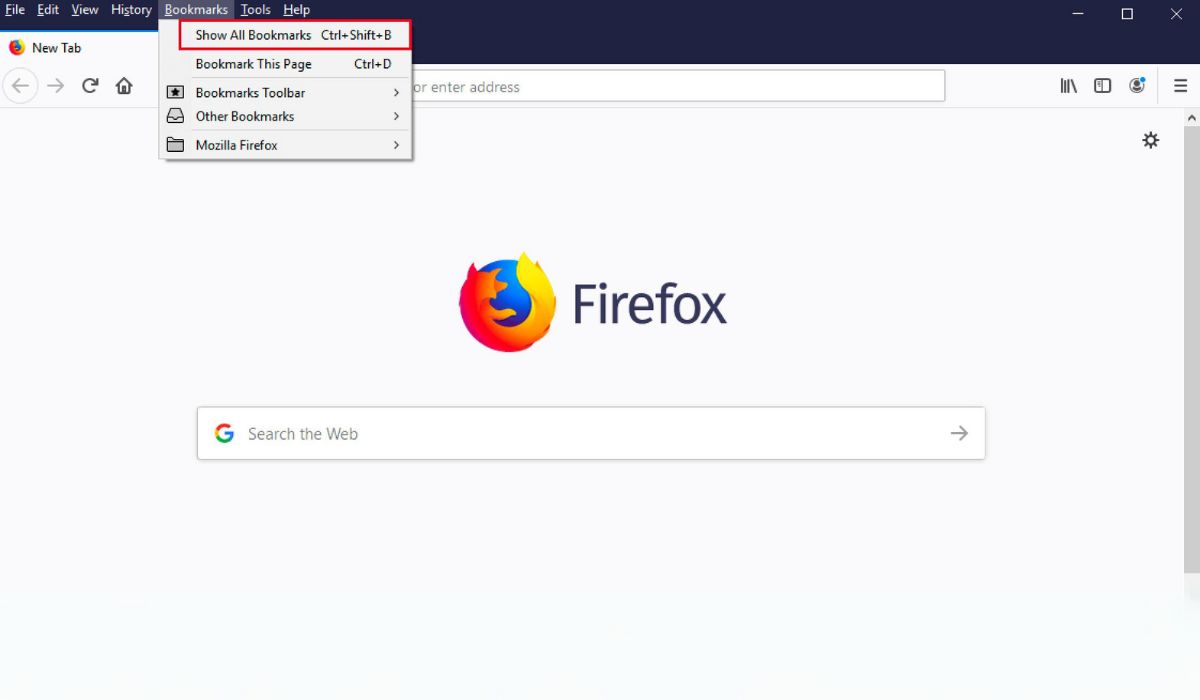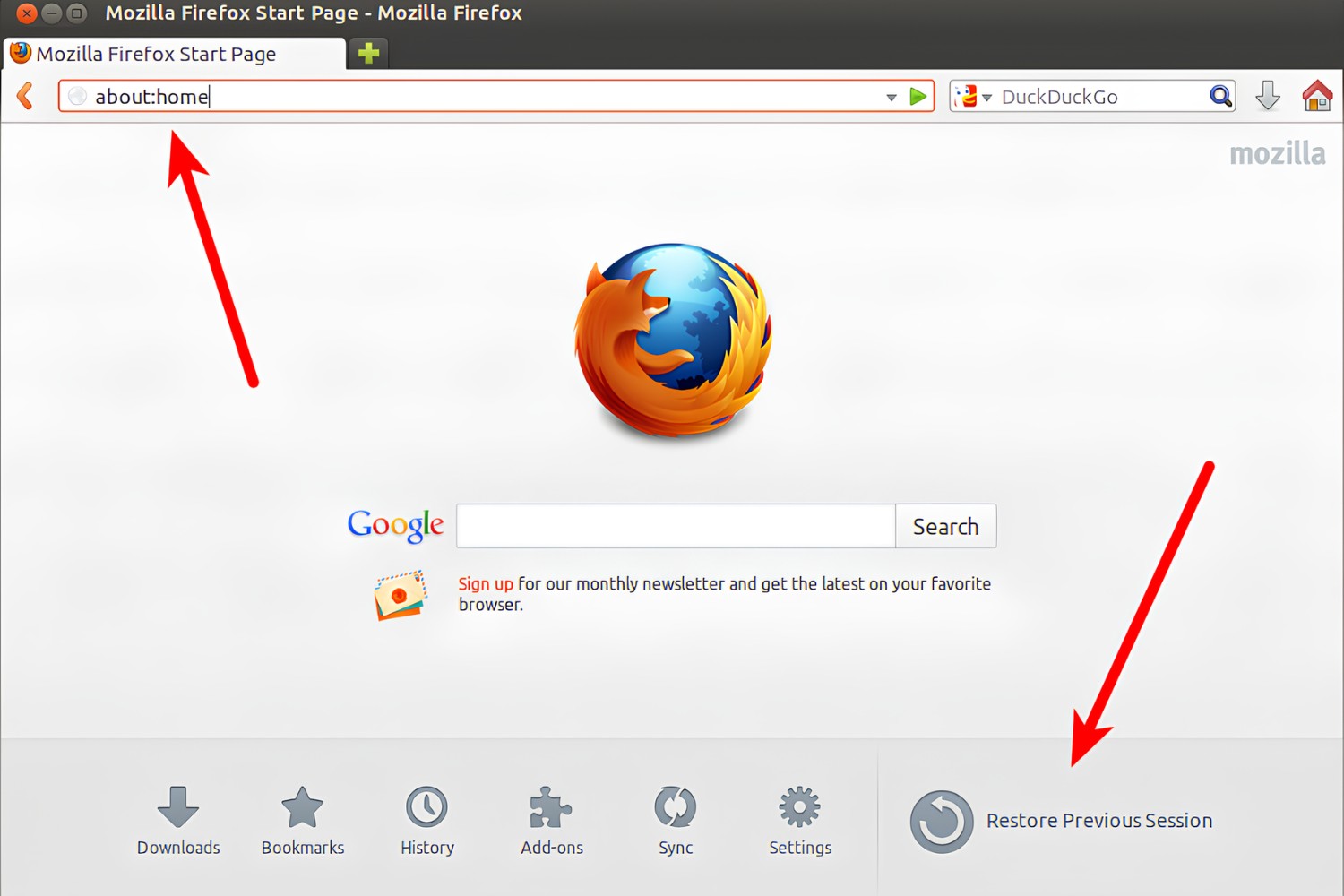Introduction
Saving a webpage in Firefox allows you to preserve a snapshot of the content for offline access, reference, or sharing. Whether it's a captivating article, a helpful tutorial, or a visually stunning webpage, Firefox provides a straightforward method to store the entire page with just a few clicks. By following the simple steps outlined below, you can effortlessly save webpages for future use, ensuring that valuable information is readily accessible even without an internet connection.
When you encounter a webpage that you want to save for later, Firefox empowers you to retain the entire layout, text, images, and functionality of the page. This means that you can revisit the content at any time, regardless of changes made to the original online version. Whether you're conducting research, archiving important information, or simply preserving a memorable webpage, the ability to save webpages in Firefox offers convenience and flexibility.
With the increasing reliance on digital resources for work, study, and entertainment, having the option to save webpages directly from your browser can be incredibly beneficial. It enables you to create a personal library of valuable content, ensuring that you have access to crucial information even when offline. Additionally, saving webpages in Firefox allows you to maintain a collection of references, tutorials, or inspirational material without the need for constant internet connectivity.
By understanding how to save webpages in Firefox, you can harness the full potential of the browser's features, making it a versatile tool for managing and accessing online content. Whether you're an avid researcher, a casual reader, or someone who values the convenience of offline access, mastering the art of saving webpages in Firefox can significantly enhance your browsing experience.
Step 1: Open the webpage in Firefox
To begin the process of saving a webpage in Firefox, you first need to open the desired webpage within the browser. Launch Firefox by clicking on its icon in your computer's taskbar or by searching for it in your applications folder. Once the browser is open, you can proceed to access the webpage you wish to save using one of the following methods:
-
Enter the URL: If you already know the specific web address of the page you want to save, simply type the URL into the address bar at the top of the Firefox window and press Enter. This action will direct Firefox to load the webpage, displaying its content within the browser.
-
Use Bookmarks: If you have previously bookmarked the webpage, you can access it by clicking on the bookmarks icon located in the Firefox toolbar. From the drop-down menu that appears, select the appropriate bookmark to open the associated webpage.
-
Browse History: In case you recently visited the webpage and it is listed in your browsing history, you can access it by clicking on the history icon in the Firefox toolbar. This will display a list of your recently visited sites, allowing you to select the desired webpage to open.
-
Search Engine Results: If you don't have the direct URL but remember the name or topic of the webpage, you can utilize Firefox's search functionality. Simply enter relevant keywords into the search bar, and Firefox will display a list of search results. From there, you can click on the relevant search result to open the webpage.
Once the webpage is successfully loaded in Firefox, you are ready to proceed with the next steps to save it for offline access or future reference. Opening the webpage within the browser is the crucial first step in the process of saving webpages in Firefox, setting the stage for preserving valuable online content with ease and convenience.
Step 2: Click on the menu button
After successfully loading the webpage you intend to save, the next step involves accessing the menu button within Firefox. The menu button, represented by three horizontal lines and often located in the upper-right corner of the browser window, serves as a gateway to various browser functions and settings. By clicking on this button, you can unveil a range of options, including those essential for saving webpages.
To locate the menu button, direct your attention to the top-right corner of the Firefox window. Here, you will find an icon consisting of three horizontal lines stacked on top of each other. This icon is universally recognized as the symbol for a menu and is designed to provide quick access to Firefox's features and functionalities.
Upon identifying the menu button, simply click on it to reveal a dropdown menu containing a plethora of options. This action prompts the menu to expand, presenting a list of commands and tools that enable you to navigate, customize, and interact with the browser effectively.
By clicking on the menu button, you gain access to a wealth of features that empower you to control your browsing experience. From managing bookmarks and extensions to accessing browser settings and developer tools, the menu serves as a central hub for Firefox's capabilities.
In the context of saving webpages, the menu button plays a pivotal role in initiating the process. It grants you access to the necessary commands for preserving the content of the current webpage, ensuring that you can capture and retain the information in its entirety.
The menu button in Firefox embodies the browser's commitment to user accessibility and convenience. It consolidates essential functions within a single, easily accessible location, allowing users to navigate the browser's capabilities with minimal effort.
In essence, clicking on the menu button in Firefox marks the beginning of your journey to save a webpage, unlocking a world of possibilities and functionalities that enhance your browsing experience. This simple action sets the stage for the subsequent steps, guiding you towards effectively preserving online content for future use and reference.
Step 3: Select "Save Page As"
Once you have accessed the desired webpage and clicked on the menu button in Firefox, the next crucial step in the process of saving a webpage involves selecting the "Save Page As" option from the dropdown menu. This action initiates the process of capturing the entire content of the webpage and saving it to a location of your choice on your computer.
Upon clicking the menu button, a dropdown menu will appear, presenting a variety of options for customizing your browsing experience. Among these options, you will find "Save Page As," which is specifically designed to enable users to store webpages for offline access or future reference.
To select "Save Page As," simply navigate your cursor to the dropdown menu that appears upon clicking the menu button. Once the menu is visible, move your cursor over the "Save Page As" option, and then click on it. This action triggers Firefox to prompt you to specify the location on your computer where you want to save the webpage and to choose the format in which you wish to save it.
By selecting "Save Page As," you are taking a significant step towards preserving the content of the webpage in its entirety. This action empowers you to retain not only the text and images but also the layout and functionality of the page, ensuring that the saved version closely mirrors the original online content.
The "Save Page As" feature in Firefox reflects the browser's commitment to providing users with comprehensive tools for managing and accessing online content. It acknowledges the diverse needs of users who seek to retain valuable information from the web and offers a straightforward method for doing so.
In essence, selecting "Save Page As" represents a pivotal moment in the process of saving webpages in Firefox. It marks the transition from merely accessing online content to actively preserving it for future use. By leveraging this feature, you can create a personal archive of webpages, ensuring that important information is readily available even when offline.
The ability to select "Save Page As" in Firefox underscores the browser's dedication to empowering users with the tools they need to seamlessly integrate online content into their digital workflows. This feature aligns with Firefox's user-centric approach, providing a straightforward and intuitive method for capturing and retaining valuable web content.
Step 4: Choose the location to save the webpage
After selecting the "Save Page As" option in Firefox, the next crucial step is to choose the location on your computer where you want to save the webpage. This step allows you to define the storage destination for the saved webpage, ensuring that it is easily accessible and organized within your computer's file system.
Upon initiating the "Save Page As" process, Firefox presents a dialog box that prompts you to specify the location where you wish to save the webpage. This dialog box typically includes a navigation interface that enables you to browse through your computer's directories and select the desired folder or directory for storing the webpage.
When choosing the location to save the webpage, it's essential to consider factors such as accessibility and organization. Selecting a location that aligns with your existing file management practices can streamline future access to the saved webpage. Additionally, opting for a location that is easily recognizable and logically structured within your computer's file system can contribute to a more efficient and intuitive storage approach.
Firefox provides the flexibility to save webpages to various locations on your computer, including specific folders, external drives, or cloud storage directories. This versatility allows you to tailor the storage location based on your preferences and workflow, ensuring that the saved webpage is seamlessly integrated into your digital environment.
By empowering users to choose the location for saving webpages, Firefox acknowledges the diverse storage needs of its users. Whether you prefer to organize saved webpages within dedicated folders, archive them alongside related content, or store them in cloud-based repositories for universal access, Firefox accommodates a range of storage preferences.
The process of choosing the location to save the webpage in Firefox reflects the browser's commitment to user empowerment and customization. It recognizes that individuals have unique approaches to file management and aims to provide a saving mechanism that aligns with diverse organizational strategies.
In essence, the ability to choose the location for saving webpages in Firefox represents a pivotal aspect of the saving process. It empowers users to define the digital environment in which their saved webpages reside, ensuring that the content is stored in a manner that suits their individual preferences and facilitates seamless access in the future.
Step 5: Click "Save"
Once you have specified the location for saving the webpage and configured any additional settings, the final step in the process involves clicking the "Save" button within the dialog box. This action confirms your preferences and instructs Firefox to capture the entire content of the webpage, preserving it in the designated location on your computer.
By clicking "Save," you effectively initiate the process of capturing the webpage and storing it as a standalone file. This action prompts Firefox to create a snapshot of the webpage, encompassing its text, images, layout, and underlying code, and save it in a format that mirrors the original online content.
The "Save" button serves as the definitive command that finalizes the saving process, ensuring that the webpage is accurately preserved for future access. Upon clicking "Save," Firefox swiftly executes the saving operation, generating a local copy of the webpage that faithfully represents its online counterpart.
The act of clicking "Save" in Firefox signifies your commitment to retaining the content of the webpage, acknowledging its value and relevance to your digital pursuits. It marks the culmination of the saving process, transforming the online content into a tangible resource that is readily available within your computer's storage infrastructure.
Firefox's implementation of the "Save" button reflects the browser's dedication to providing users with a seamless and intuitive method for capturing and preserving web content. By consolidating the saving action into a single, straightforward command, Firefox streamlines the process, ensuring that users can efficiently store webpages without unnecessary complexity.
In essence, clicking "Save" in Firefox represents the final step in the journey of saving a webpage, encapsulating the transition from online browsing to offline preservation. This action empowers users to build a personal repository of valuable web content, ensuring that crucial information is always within reach, regardless of internet connectivity.
By understanding the significance of clicking "Save" in Firefox, users can fully leverage the browser's capabilities to capture, retain, and access online content, enriching their digital experiences and empowering their pursuit of knowledge, creativity, and productivity.







